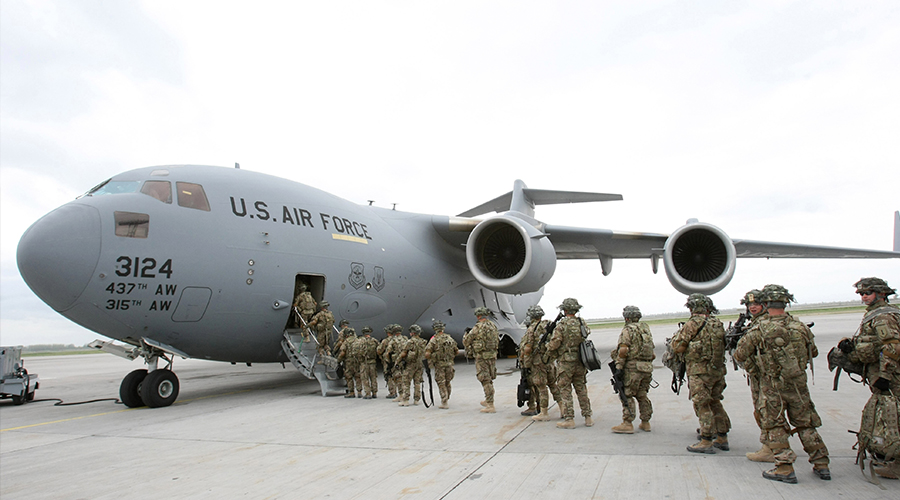Over the past twenty years, the US was involved in three wars, resulting not only to its military presence in the Middle East, but also lead to its implementation of measures of economic cooperation and humanitarian aid in the region. The first war was in Afghanistan in response to the terrorist attacks of September 11, 2001 in New York and Washington. The second one was in Iraq in 2003 under the pretext that Baghdad possessed nuclear weapons. After the failure to detect these weapons, the task turned into attempts of establishing a new democratic state in Mesopotamia. The third war was against terrorism in general, particularly against ISIS on the Syrian-Iraqi borders.
Consequently, the three wars resulted in intensive US presence in the Middle East, which was not only militarily and for security purposes , but it was also an economic and political existence, whereby it dealt and negotiated with local political leaders and in many instances even got involved in ethnic and sectarian concerns.
This year, the US was committed to withdraw from the Middle East and has in fact implemented this plan recently by leaving Afghanistan. Moreover, it has agreed with the Iraqi Prime Minister Mustafa Al-Kadhimi to completely exit Iraq before the end of year. The fate of the US forces in Syria , who in-fact are not more than 900 military personnel, has not been decided yet. However, it is estimated that they will be greatly reduced during the coming period. What is certain is that the conclusion of the US withdrawal is a cutback of the US military footprint in the region.
However, one can affirm that such withdrawal does not mean the end of the US presence and interest in the region. The US still sees the proliferation of nuclear weapons as a threat to it. Therefore, after signing the 5+1 nuclear deal with Iran under President Obama in 2015, followed by its withdrawal from it in 2018 under President Trump, the US under President Biden once again returned to the agreement. Through new negotiations, it seeks to impede Iran from acquiring nuclear weapons, in exchange for the lifting of severe economic sanctions. Reaching this agreement practically means reducing the US presence in the Arab Gulf region.
Strategic Latency
This withdrawal, which is based on what is known as President Biden's strategy, leads internally to some kind of internal ‘strategic latency’ that permits the US to first rebuild its own institutional system.
Second, this gives way to the US strategic repositioning with countries that have signed comprehensive security treaties, such as the ones with NATO countries, Japan, Australia and South Korea.
Third, the US will prepare itself to enter into wide competition with China, part of which is related to other East Asian countries, while the other part pertains to economic competition with major Chinese projects, such as the Belt and Road initiative.
Fourth, as is the case in the Middle East, the US will rely more on regional actors, primarily Israel, Turkey, Egypt, as well as Qatar and the UAE, for achieving some of its endeavors. The US-Saudi relations will remain to be of special significance, given the Kingdom's unique position in the Islamic world and its vital role in the world's energy economies.
Taking all this into consideration, it is difficult to assess the impact of the US exit from the region. It is widely believed that the exit will be followed by a vacuum, which will invite other international powers, such as China and Russia as well as other regional powers, to establish their own influence. This view is neither easy nor possible. Generally, it is simply an invocation of historical analogies, while time seems to be moving in other directions. The major powers, such as Russia, are exhausted from the Syrian experience and seem to have had enough of that. As for China, it is very careful in its diplomatic moves, which are rather more economic.. On the other hand, China has the skill and ability due to its economic diplomacy to establish the Israeli port of Haifa, and to participate in major projects of establishing the Administrative Capital and the axis of the Suez Canal in Egypt, and to conclude a wide-ranging oil and investment agreement with Iran as well.
In any case, this new phase of the tri-polar international system is still in its early stages. However, what is evident is that it will take place under a light, demilitarized US presence.
Regional Adaptation
The regional reaction to the US exit began a while before the commencement of the US withdrawal. There is a regional state of calm and reconciliation, as countries tend to lay the foundations for regional order and security, seeking to avoid major conflicts, as well as searching for solutions to persistent issues. The Al-Ula Declaration, issued by the Gulf summit in January 2021, laid the foundation for the restoration of relations between the countries of the Quadruple Alliance (Saudi Arabia, Egypt, the UAE and Bahrain) and Qatar. This was recently reiterated at the Baghdad summit on Iraq's security, in terms of holding interviews and reopening negotiations between Saudi Arabia and Iran, Egypt and Turkey, and between the UAE and Qatar and Turkey.
Along this trend towards appeasement and seeking regional solutions to regional problems, the direction of peace with Israel has taken two directions, both of which have a valid economic nature, reflecting the courses of the next stage. There is the agreement of the Eastern Mediterranean Gas Forum (EMGF), which includes seven countries, including Palestine, Israel, Jordan and Egypt, and the Abraham Accords between the UAE and Bahrain on one side and Israel on the other. Given all these movements, this clearly indicates that the Middle East has arranged for the post-US exit phase.


